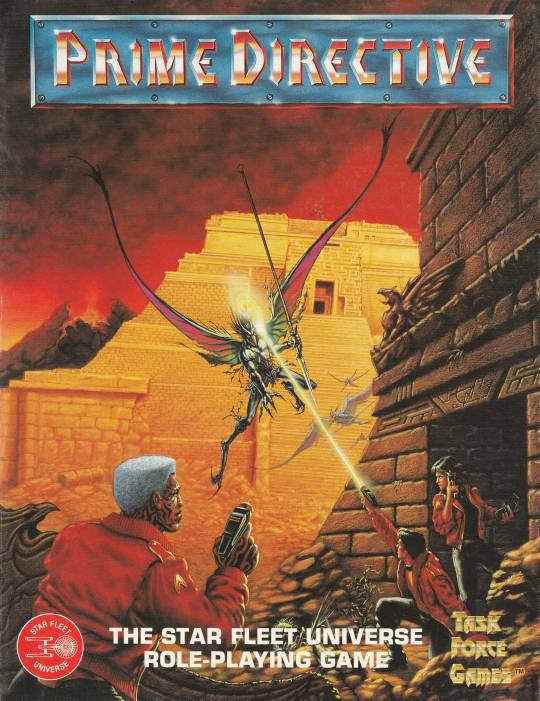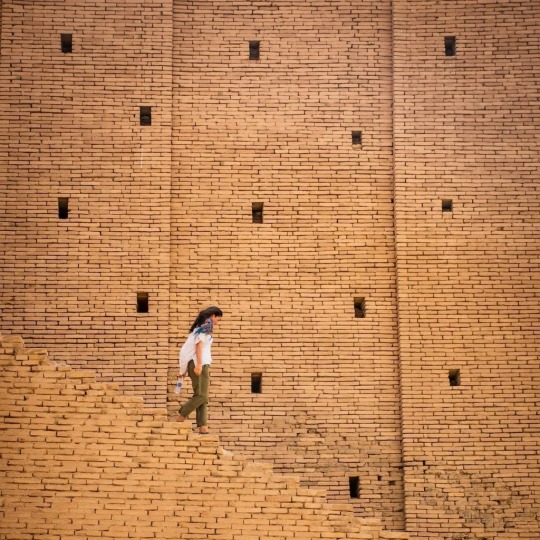#the ziggurat
Text
by the way where are the bells this we-

oh fucking gods me!!
#the ziggurat#cr spoilers#live blogging#campaign 3#critical role#bells hells#laudna be like?#delilah briarwood#shits getting real
33 notes
·
View notes
Note
I hope this isn't too random to ask, but!!! I think I recall seeing an old post about a dadmight discord going around? On your page or someone else's!! Is it still up and/or open??? It would be so cool to join if so! (I enjoy them and miss them, fr...)
It's not officially a Dadmight discord server, but @aconstantstateofbladerunner's server is full of Dadmight fans! Make sure to read the rules if you join, and enjoy!
10 notes
·
View notes
Link
Opening my discord back up for my new followers! It’s a place focused primarily on My Hero Academia gen fics! Here, you can discuss your ideas for your stories and get helpful feedback and advice from a number of other authors! (Plus, sneak peaks and behind the scenes looks at my stuff.) We also host fun events both related to fics and beyond, so come on down!
36 notes
·
View notes
Text


The Ziggurat
Home of Isaak
Most giants worked there until only Brozz was left. He believes in a conspiracy involving cats because he's afraid of Bastet
0 notes
Text

Battle at the Ziggurat -- David Menehan's cover for Prime Directive: The Star Fleet Universe Role-Playing Game, by Task Force Games, designed by Timothy D Olsen and Mark Costello (1993).
Prime Directive obviously is a Star Trek RPG, but one that does not mention "Star Trek" by name. It was published under the same license as Star Fleet Battles, granted to Stephen V Cole's Amarillo Design Bureau in the late 1970s by Franz Joseph, creator of the 1975 Star Fleet Technical Manual.
Like Star Fleet Battles, Prime Directive is focused on military actions. Player characters are members of a Federation Prime Team, an elite special forces unit assigned to the most dangerous missions.
Prime Directive describes a United Federation of Planets, phasers, and Vulcans, but you won't find Kirk or the Enterprise in this book, even in its detailed Star Fleet Universe Timeline. For that you need Star Trek: The Role Playing Game by FASA (1982-89), based directly on the original series, animated series, and first movie.
From Prime Directive:

#Prime Directive#Star Trek#David Menehan#Star Trek RPG#sci fi#Star Fleet Universe#Task Force Games#Amarillo Design Bureau#Star Fleet#Star Fleet Battles#Timothy D Olsen#Mark Costello#Stephen V Cole#Franz Joseph#Franz Joseph Designs#Star Fleet Technical Manual#United Federation of Planets#ziggurat#phaser
210 notes
·
View notes
Photo

The Sumerians were the people of southern Mesopotamia whose civilization flourished between c. 4100-1750 BCE. Their name comes from the region which is frequently – and incorrectly – referred to as a “country”. Sumer was never a cohesive political entity, however, but a region of city-states each with its own king. Sumer was the southern counterpart to the northern region of Akkad whose people gave Sumer its name, meaning “land of the civilized kings”. The Sumerians themselves referred to their region simply as “the land” or “the land of the black-headed people”. The Sumerians were responsible for many of the most important innovations, inventions, and concepts taken for granted in the present day. They essentially “invented” time by dividing day and night into 12-hour periods, hours into 60 minutes, and minutes into 60 seconds. Their other innovations and inventions include the first schools, the earliest version of the tale of the Great Flood and other biblical narratives, the oldest heroic epic, governmental bureaucracy, monumental architecture, and irrigation techniques. After the rise of the Amorites in Mesopotamia, and the invasion of the Elamites, Sumer ceased to exist and was only known through references in the works of ancient writers, including the scribes who wrote the biblical Book of Genesis. Sumer remained unknown until the mid-19th century CE when excavations in Mesopotamia unearthed their civilization and brought their many contributions to light.
127 notes
·
View notes
Text
yoooo!!! @uuurgh made this awesome clip for the pwnisher 3d challenge. as soon as i saw it i wanted to share! here, have some 'maul journeys through the wbw and saves the timeline' plot bunnies. 🤣
#shared with permission#star wars#darth maul#sith#zabrak#dathomir#nightbrothers#star wars fanart#pwnisher#sith ziggurat#world between worlds#lightsabers#time travel#Star wars au#star war fan content#star wars the clone wars#sw tcw#Star wars rebels#swr#sw rebels#maul opress#animation#sci fi art#sith lord#lord maul#star wars art#artists of tumblr#watching this on loop#star wars legends#malachor
123 notes
·
View notes
Photo



The Ziggurat of Ur
926 notes
·
View notes
Text
oHO the complete cross-section image of the jedi temple. the leftmost corner is cut-off in the actual book. it's not really anything new but i demand completion if the completion has already been achieved.

- christian a piccolo
the room of 1000 fountains is supposed to be seven storeys tall (the lake level is five) & the way the cross-section sets it up is that the arcade that goes around the entirety of the temple (as can be seen in the whole cross-section) is also seven storeys tall. which works. it works with how the main entrance is seen in the films.
#keeping up with the skywalkers#i'm just trying to figure out where sifo-dyas's (& lene's) rooms are (they're on the same hallway. in an older part.)#(i'm importing machiya into the temple. i've decided it's five billion other buildings with a shell. like a domed city.)#(they may technically be on a level below the storage one)#look they called it a ziggurat a ziggurat has MANY SUCCESSIVE LEVELS/TERRACES i WILL be ornery about language#i KNOW my bronze age archaeology i WILL weaponise it#it's a STEPPE PYRAMID it NEEDS STEPPES. at least two.
71 notes
·
View notes
Text

Judy Pfaff: ‘Ziggurat’ (1981)
#my scans#judy pfaff#ziggurat#1981#abstract#abstract art#80s art#1980s#colors#colorful#aesthetic#art
107 notes
·
View notes
Text

by Evgeniy Musienko
Check out Tabletop Gaming Resources for more art, tips, and tools for your game!
#Evgeniy Musienko#environment#underground#temple#ruins#ziggurat#cave#tabletop rpg#rpg#tabletop gaming#pen & paper#roleplayer#roleplaying games#games#dnd#d&d#pathfinder#dungeons & dragons#dungeons and dragons#fantasy rpg
87 notes
·
View notes
Text

honestly forgot about it but ngl like this (🥀)
59 notes
·
View notes
Note
Yo, I really love your work (Butterfly and Moth Fucked Me Up™ and All But One? Devastated me. Angel's Egg had me staring at a wall) and... actually inspired me to think more about my own AU!
I see the mention of a Discord server popping up in your posts occasionally— I was wondering if I could join? No worries if not! Some servers are meant to be for close friends and I'm a stranger. But I would love for a community to talk about various BnHA fanworks with, maybe even my own half-baked AU because it's no fun to think about it alone.
yeah sure you can join. it's technically a public server, i just don't share the link often
6 notes
·
View notes
Text

Chogha Zanbil Ziggurat - Iran
#Chogha Zanbil#iran#ziggurat#light#archaeology#architecture#magic#annunaki#consciousness#extraterrestrial#ascension#alchemy#energy#ancient#archeology#esoteric#ruins#pyramid#engineering#alien
36 notes
·
View notes
Text
Same energy

I kinda feel bad for drawing Ryusei with these three tho...even his own brother-in-law is unhinged af😭
And don't worry guys Satoshi NEVER gets furious to the kids like that TvT When he was still the guardian of Koma village, you would see him like this if an intruder tried to steal Lightning LDrago and he would proceed to traumatize them so that they'd never come back ever again.
#metal fight beyblade#mfb#beyblade fanart#ryusei hagane#ryo hagane#doji beyblade#daidouji#dr ziggurat#satoshi yozora#mfb oc#beyblade oc#kishatu art
37 notes
·
View notes
Photo

A Gallery of Mesopotamian Religion
Mesopotamian religion was informed by the belief that humans were co-workers with the gods in maintaining the order created at the beginning of time and so religious expression was integral to daily life in ancient Mesopotamia in how they chose to perform tasks on the job, behave toward others, and honor those gods.
Among the most common displays of respect for the divine was Mesopotamian art and architecture in which the deity's depiction emphasized some defining characteristic. The terracotta plaque, Ishtar Standing on a Lion, for example, shows the goddess armed above a subdued lion, symbolizing her role as a powerful war deity. The stamp-seal of Gula, goddess of healing, depicts her in the presence of one of her dogs – also associated with healing – welcoming a supplicant, in keeping with her primary role.
The gods of ancient Mesopotamia were not only venerated through formal artwork like plaques or reliefs, however, but through everyday objects – amulets, charms, figurines – one would carry or keep around the home to court a certain deity's favor or ward off the threats from evil spirits or demonic energies. This was also true of temples where foundation figures, in the form of the king who commissioned the building, were ritually buried to mark off the sacred from the common areas.
Since the world was understood as alive with spiritual energies – positive and negative – it was considered prudent to take measures to attract the bright energies and defend against the dark through sacred objects used to ward off bad luck, ghosts, the schemes of sorcerers, and the physical maladies that were recognized as either a spiritual attack or the result of one's own sins and a god's displeasure.
The following gallery presents a sampling of the stele, amulets, statuary, figurines, and temples, which developed from Mesopotamian religious belief. Among these are some of the most famous works from the region such as the Code of Hammurabi, the Mask of Warka, the Warka Vase, and the Nimrud Dogs along with lesser-known pieces including the votive figures, stamp seals, cylinder seals, spells, and reliefs.
Continue reading...
146 notes
·
View notes